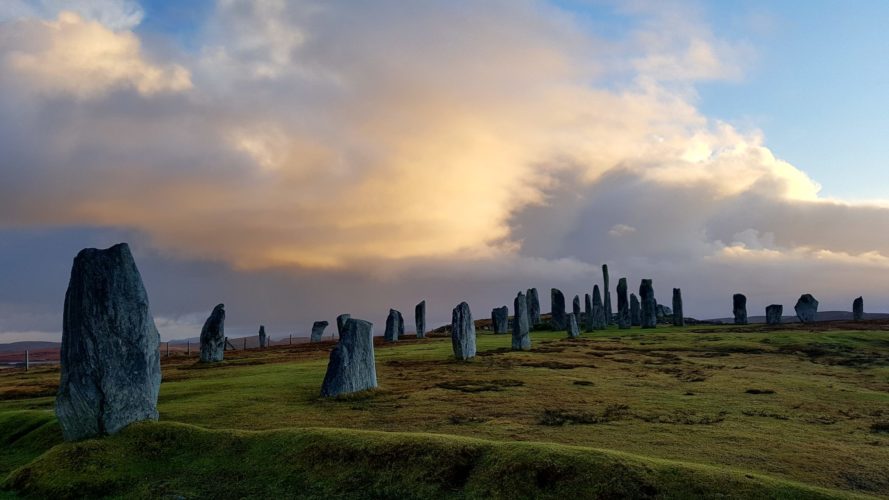Hidden ancient stone circles to be rediscovered

New funding from Historic Environment Scotland (HES) will allow researchers at the University of St Andrews to discover the secrets of hidden stone circles on the Isle of Lewis.
A pilot project led by Dr Richard Bates of the School of Earth and Environmental Sciences at the University of St Andrews, with a team of archaeologists and geophysicists from Bradford University and Trinity St David, University of Wales, previously explored the area near the famous Calanais standing stones.
Community volunteers helped to survey one of the satellite stone circle sites close to Calanais and the team of experts was able to create images of the buried stone circle and also discover that a major lightning strike had occurred at the centre of the stone circle.
The new project will allow the team and community to extend the investigations to the other stone sites and importantly to map the Neolithic landscape buried beneath the peat and submerged offshore.
Urras nan Tursachan has been awarded a £19,920 from HES for a community project to train local volunteers to survey and record the coastal landscape at Calanais, the intertidal zone and the waters of Loch Roag. Researchers will aid the project to use geophysics and traditional survey techniques to gain new insights into the site.
Dr Richard Bates said: “We are extremely pleased to be working with Urras nan Tursachan (UNT) on this exciting new project. The landscape holds so many fascinating secrets that we hope can be addressed through a combination of geophysical remote sensing and boots-on-the-ground with the local community volunteers.”
The project is one of 18 community-based projects receiving funding from Historic Environment Scotland (HES) to protect, promote or engage with Scotland’s coastal or waterway heritage as part of its Coast and Waters Heritage Fund.
Grants of £3,000 to £20,000 from an overall fund of £194,349 have been awarded to projects which deliver benefits to the local community through outreach and educational activities, repairs to stabilise historic or marine structures, developing traditional skills and increasing understanding of Scotland’s coasts and waters heritage. Funding has also been awarded to projects which are developing and implementing measures to enhance resilience and adapt to climate change.
The Coasts and Waters Heritage Fund is a one-off competitive fund which launched in March to celebrate Scotland’s Year of Coast and Waters.
The paper, ‘Geophysical Investigation of the Neolithic Calanais Landscape’ by C Richard Bates, Martin Bates, Chris Gaffney, Vincent Gaffney and Timothy D Raub is published in Remote Sensing and available online.
Please ensure that the paper’s DOI [doi.org/10.3390/rs11242975] is included in all online stories and social media posts and that Remote Sensing is credited as the source.
Issued by the University of St Andrews Communications Office.